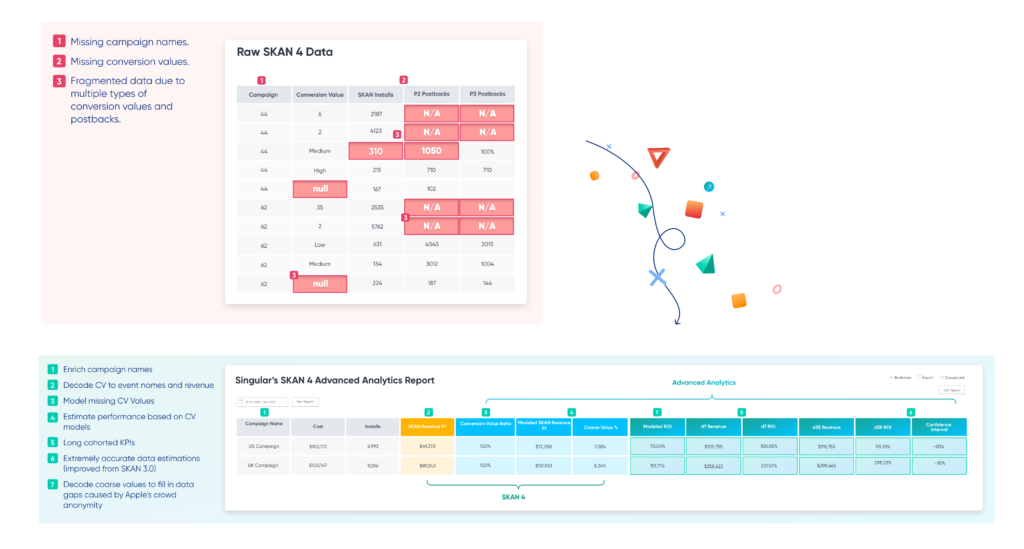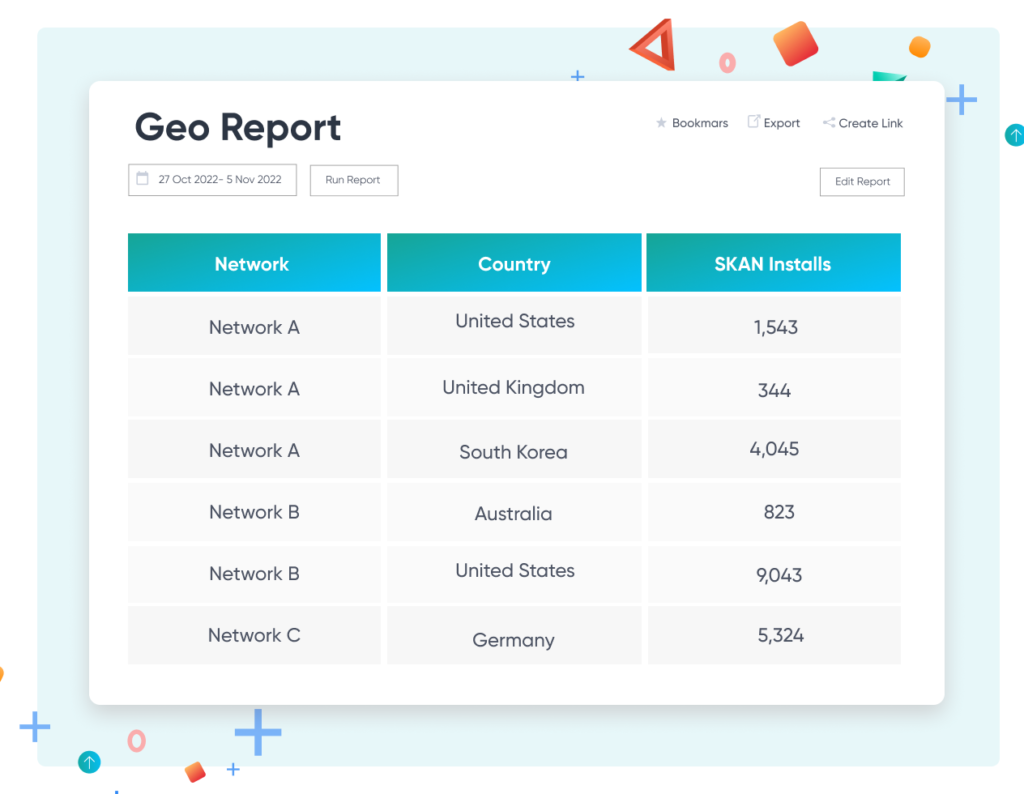Scaling iOS growth with SKAN 4: How Singular will help
The news we’ve all been anxiously awaiting dropped this week – SKAN 4 is live. Since WWDC the industry has been holding their breath, waiting, and probably expected an earlier beta to come first. But no such luck – SKAN 4 is here and so are some updates that weren’t originally announced at WWDC.
New SKAN, new challenges
While it’s a no-brainer to eventually adopt SKAN 4, migrating isn’t going to be as easy as flipping a switch. We expect ad networks to devise ways to maintain SKAN 3 support and performance, whilerolling out SKAN 4 campaign support (optimization) to “test the waters” (A/B test) until their optimization algorithms can learn to use SKAN 4.
So this will take time.
The reality is the industry (ad networks, MMPs, and marketers) has just started to learn to use SKAN 3 and adopting the new framework will present challenges. Many found SKAN 3 so unusable and difficult to crack that they completely abandoned iOS spend and redefined their marketing strategies to focus on Android and in some cases web-to-app journeys. SKAN 4 presents significant changes, including those announced at WWDC (read an extensive deep dive here) and those changes we learned about on release day (read our assessment on the net new SKAN 4 changes here). There are many new interesting and powerful features, but there’s not an easy path towards backward compatibility.
And ultimately SKAN 4 still has the same general themes that presented difficulties in SKAN 3 i.e. SKAdNetwork imposes a lot of resource heavy challenges and marketers need smart partners that will innovate quickly, embrace education, lead with data transparency, and above all will prioritize a privacy-first mindset to product development.
Singular’s SKAN 4 support
While we’re still actively in development and don’t have all of the answers, we can promise big improvements between SKAN 3 and 4 reporting. We’ll see increased accuracy in modeled data and longer cohorts compared to what we’ve been able to achieve in SKAN 3 – which is saying a lot given we reached 87% D7 revenue accuracy with SKAN 3.
Let’s dive into how we’re going to deliver.
New conversion models
First, we’ll start with the foundation of any strong SKAN strategy, the conversion model. New SKAN models will enable marketers to assign different values for each install which will contribute to more robust reporting capabilities.
Let’s break it down:
- The first conversion model will support the first postback, (a.k.a. “P1”), which will allow a fine and coarse value to be configured for each event or set of events.
- Singular will then map coarse values to fine values in the P1 postback which will enable Singular to decode coarse values (low, medium, high) reported from second and third postbacks too (a.k.a. “P2” and “P3”).
- Different models will support postbacks P2 and P3, which will allow you to set different goals for each postback and measurement period. This will also allow you to adjust your data-driven perception of the value of each user and campaign as you get more data between D7 and D35.
SKAN Advanced Analytics and granularity
The new conversion models and mapping of values will enhance an already solid data foundation in Singular’s SKAN Advanced Analytics and power even more insight.
SKAN Advanced Analytics are data-science-powered modeled analytics that bring back a comprehensive SKAdNetwork reporting layer with ROI and cohorted KPIs which are available out of the box for all of Singular’s attribution customers.

By mapping the coarse values to the fine values, Singular can model values for the P1 postback (Day 2) as well as model the null conversion values (which Singular introduced to the market last year.
The 2 day measurement period improves the ability to capture events that don’t typically fire on day 1. And the additional postbacks deliver insights later down the funnel that were previously obfuscated by Apple in SKAN 3, and unlock the ability to more accurately calculate D7 revenue and other KPIs. Accurate 7-day revenue is great, and was a hard KPI to calculate in SKAN 3, but now there’s more: Singular will also be able to calculate D35 cohorted revenue and KPIs thanks to the additional postbacks.

Lastly, (for now) Singular can report further granularity in the P1 postback by utilizing the hierarchical sources.
This does require collaboration in which ad networks would need to share their encoding levels with Singular, which they’re already doing for SKAN 3.
When ad networks opt to share their campaign names, for example, in their forwarded SKAN postbacks, we’re able to enrich SKAN reports with a readable campaign name instead of the numerical default SKAN Campaign ID. With some advocacy and collaboration, granularities like Country, Geo, and Creative are possible, and perhaps even more.
Light at the end of the tunnel
While this SKAdNetwork journey is a crazy one with lots of bumps, and roadblocks, we see the light at the end of the tunnel and we’re happy to be along for the ride. This is the biggest change to SKAN since 2.0, and while this is a tough transition for the iOS ecosystem, this will help the industry create a playbook to ease adoption and migration for the future of SKAN measurement.
Still have questions? Reach out – we love talking SKAN!
And join our LinkedIn Live, this Friday, October 28th @ 11am PST.
Stay up to date on the latest happenings in digital marketing


